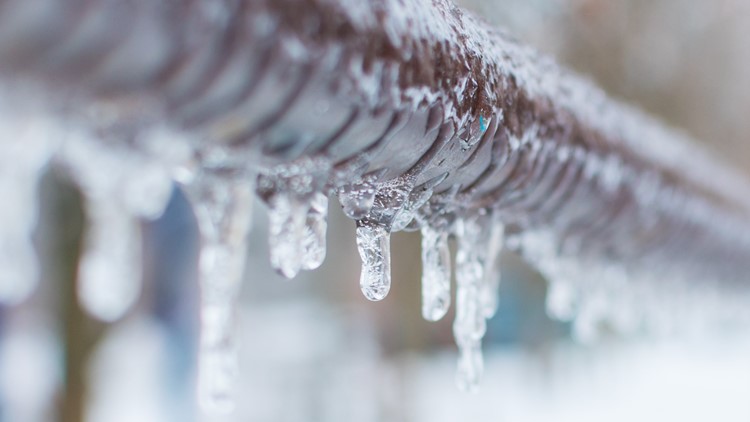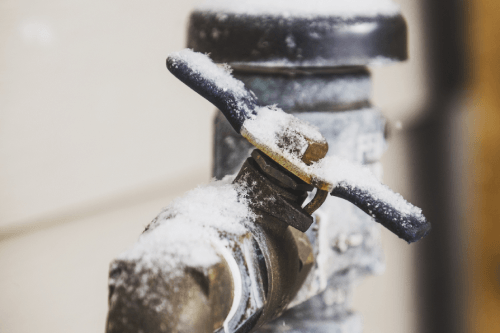We've come across this great article involving How to Prevent Your Pipes From Freezing below on the internet and thought it made sense to share it with you on this site.

Winter can damage your pipes, especially by freezing pipes. Below's how to stop it from occurring and what to do if it does.
Introduction
As temperature levels decline, the danger of frozen pipelines rises, potentially causing costly repair services and water damage. Comprehending exactly how to stop icy pipelines is important for homeowners in cold climates.
Comprehending Icy Pipelines
What causes pipelines to freeze?
Pipes freeze when subjected to temperatures listed below 32 ° F (0 ° C) for extended periods. As water inside the pipelines ices up, it increases, putting pressure on the pipe walls and potentially creating them to burst.
Dangers and damages
Frozen pipes can cause water system disruptions, residential property damage, and costly repairs. Ruptured pipes can flooding homes and trigger substantial architectural damages.
Signs of Frozen Pipes
Recognizing icy pipes early can prevent them from rupturing.
How to recognize frozen pipes
Seek reduced water circulation from taps, uncommon smells or noises from pipelines, and visible frost on subjected pipelines.
Prevention Tips
Insulating vulnerable pipes
Wrap pipelines in insulation sleeves or use heat tape to secure them from freezing temperatures. Concentrate on pipelines in unheated or outside areas of the home.
Home heating strategies
Maintain indoor spaces sufficiently heated up, specifically locations with plumbing. Open up closet doors to enable cozy air to circulate around pipelines under sinks.
Securing Outdoor Plumbing
Garden hoses and exterior taps
Separate and drain garden tubes prior to wintertime. Install frost-proof spigots or cover outside taps with protected caps.
What to Do If Your Pipelines Freeze
Immediate activities to take
If you presume icy pipelines, keep taps open up to relieve stress as the ice thaws. Utilize a hairdryer or towels soaked in hot water to thaw pipelines slowly.
Long-Term Solutions
Architectural changes
Consider rerouting pipelines far from outside walls or unheated locations. Include added insulation to attics, basements, and crawl spaces.
Updating insulation
Purchase high-quality insulation for pipelines, attics, and wall surfaces. Appropriate insulation helps maintain regular temperatures and reduces the threat of frozen pipes.
Conclusion
Stopping frozen pipelines calls for proactive procedures and fast feedbacks. By recognizing the reasons, signs, and preventive measures, house owners can shield their pipes during cold weather.
5 Ways to Prevent Frozen Pipes
Drain Outdoor Faucets and Disconnect Hoses
First, close the shut-off valve that controls the flow of water in the pipe to your outdoor faucet. Then, head outside to disconnect and drain your hose and open the outdoor faucet to allow the water to completely drain out of the line. Turn off the faucet when done. Finally, head back to the shut-off valve and drain the remaining water inside the pipe into a bucket or container. Additionally, if you have a home irrigation system, you should consider hiring an expert to clear the system of water each year.
Insulate Pipes
One of the best and most cost-effective methods for preventing frozen water pipes is to wrap your pipes with insulation. This is especially important for areas in your home that aren’t exposed to heat, such as an attic. We suggest using foam sleeves, which can typically be found at your local hardware store.
Keep Heat Running at 65
Your pipes are located inside your walls, and the temperature there is much colder than the rest of the house. To prevent your pipes from freezing, The Insurance Information Institute suggests that you keep your home heated to at least 65 degrees, even when traveling. You may want to invest in smart devices that can keep an eye on the temperature in your home while you’re away.
Leave Water Dripping
Moving water — even a small trickle — can prevent ice from forming inside your pipes. When freezing temps are imminent, start a drip of water from all faucets that serve exposed pipes. Leaving a few faucets running will also help relieve pressure inside the pipes and help prevent a rupture if the water inside freezes.
Open Cupboard Doors
Warm your kitchen and bathroom pipes by opening cupboards and vanities. You should also leave your interior doors ajar to help warm air circulate evenly throughout your home.

I have been very fascinated with How To Avoid Freezing Pipes and I hope you appreciated the new page. Sharing is nice. You never know, you will be helping someone out. I am grateful for your time. Don't hesitate to pay a visit to our site back soon.
Click Here
Comments on “Essential Tips to Prevent Frozen Plumbing in Cold Weather: Professional Guidance”